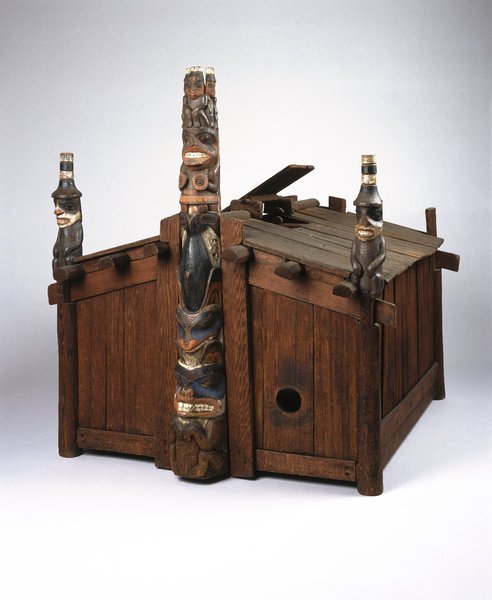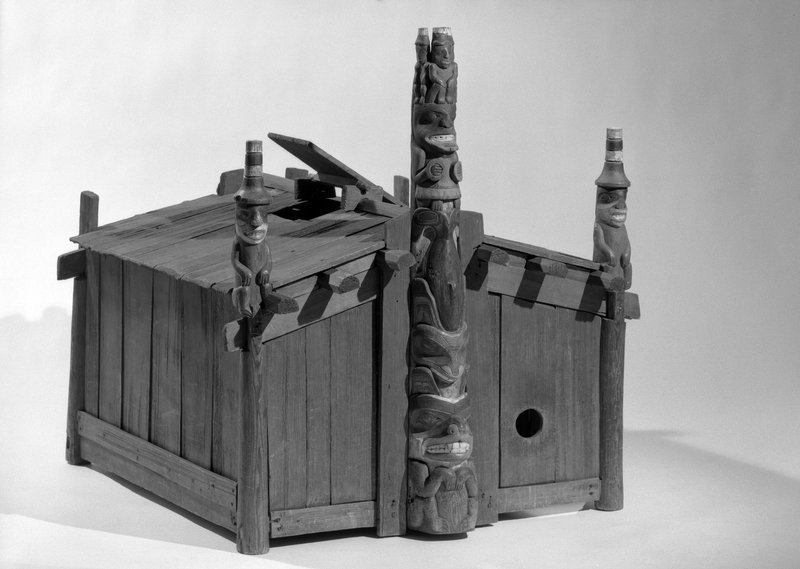Model of House of Contentment Item Number: 05.589.7791 from the Brooklyn Museum




Description
Model house with front section having a totem pole in the center and a house post at either end. The house model was made for visitors to the World's Columbian Exposition in Chicago in 1893 as a traditional example of Haida architecture. There is a split in the wood of the angled beam below the house post on the proper left side of the front due to a nail which attaches the corner post. Some surface wear but condition generally good. Description from Dean's notes: George Dickson (his grandmother was a daughter of Clads an Coon, her mother was a daughter of the Massett Chief Edenshaw), also mentioned in an account of old houses. Name of house was Seen-ah-Cootkie, House of Contentment. Figure on pole: wasgo, whale, female shaman, three watchmen on top, one on each corner post: adopted through connections with Skidegate family.
Credit Line
By exchange
Label
George Dickson made this Haida house model for the Chicago 1893 World’s Columbian Exposition, where an entire Skidegate village was reproduced. The totem pole’s figures represent a wasgo (sea wolf), a whale, a female shaman, and three watchmen at the top. The corner posts are also carved with watchmen, thought to protect the village from evil spirits. The small doorway forced those entering and exiting to crawl through, reenacting birth and death into another realm. In winter, potlatch celebrations were held inside this type of Big House.
George Dickson hizo este modelo de casa Haida para la Feria Mundial de Chicago de 1893, donde se reprodujo un pueblo Skidegate completo. Las figuras del tótem representan un wasgo (lobo marino), una ballena, una mujer chamán, y tres guardianes en la parte superior. Los pilares de esquina están también tallados con guardianes, se cree que para proteger el pueblo de espíritus malvados. La pequeña puerta obligaba a aquellos que entraban o salían a arrastrarse a través de ella, interpretando el nacimiento y la muerte que conduce a otro mundo. En invierno, las celebraciones de potlach se realizaban dentro de este tipo de Casa Grande.
Item History
- Made between 1868 and 1899
What
- Name
- Model of House of Contentment
- Identification Number
- 05.589.7791
- Type of Item
- house and model
- Material
- cedar wood and pigment
- Overall
- length 36.625 in, width 34.625 in, height 35.8125 in
Where
- Holding Institution
- Brooklyn Museum
When
- Creation Date
- between 1868 and 1899
Other
- Location
- Arts of the Americas Galleries, 5th Floor
- Classification
- Model